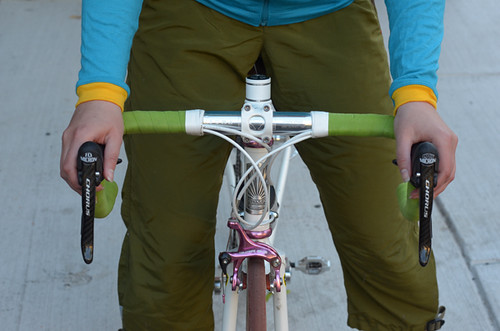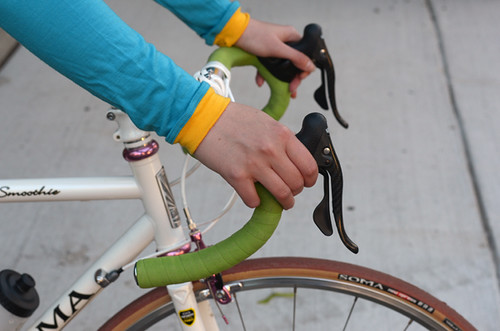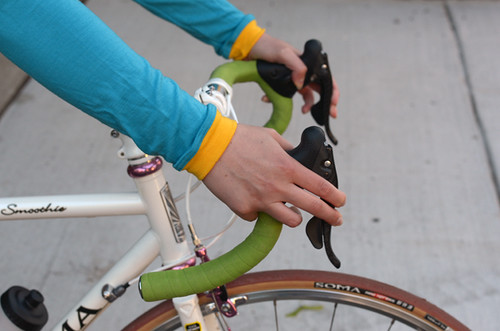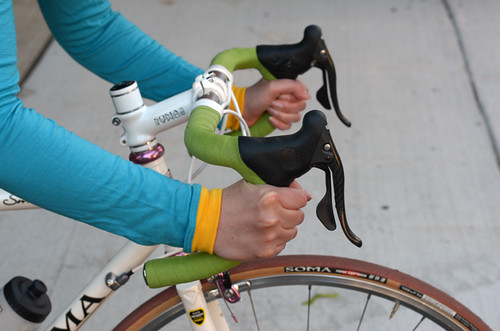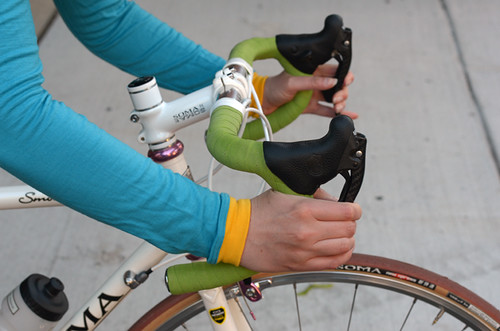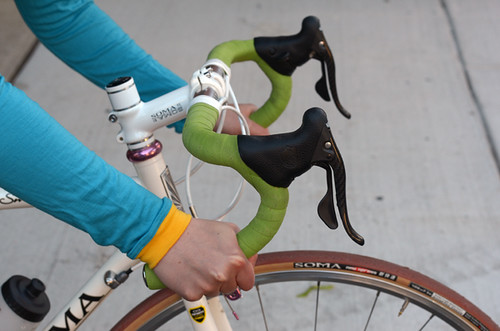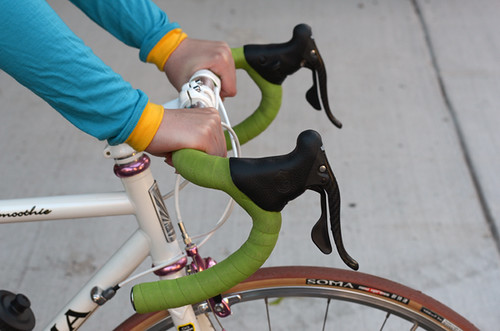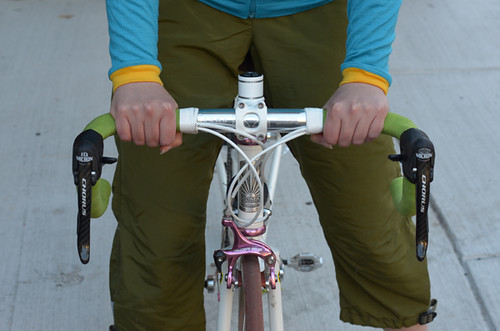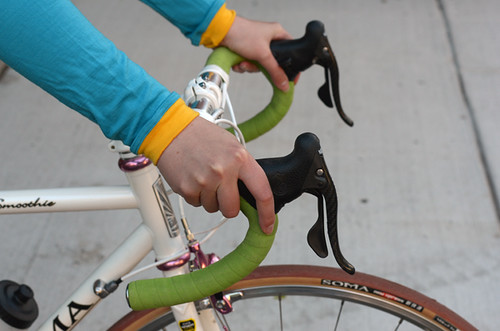This jacket review eventually took on a life of its own. Way too complicated and way too time consuming to post anything even reasonably accurate and informative for public consumption.
Just not enough time to work, climb and write. Time management, we all know the story. So instead of a detailed description of each jacket I have bailed on the "jacket review" writing project. Big reason is not the lack of written content but my own inability to post all the pictures on the blog that I wanted to for each jacket so you could make your own comparisons.
Hopefully I will be able to post the detailed photos and commentary on each individual jacket at some point in the future. I have tried to leave the important points from my own research for a new jacket. May be that will help someone else looking for a similar jacket to be used in a similar manner. The other jackets that deserve even more attention are the many light weight versions of the belay jacket. The Mountain Hardware Compressor
Hoody pictured here is a good example of that style of jacket.
All the jackets pictured here are a Men's XL jackets (except for the FF Hooded
Helious which is a unisex XXL) with a T shirt under them. On a good day I am 6'1" and 205#. Fit ranged from way too small (FF
Helious) to way too big (the Patagonia
DAS) and everything
inbetween usable and not usable for me.
Top to bottom, red Patagonia
DAS, black
Arcteryx Dually, 2 tone black
Mammut, Feathered Friends green Hooded
Helious, Amazon green
Narrona Lyngen down, gold Feathered Friends Front Point, red Eddie Bauer XV, black
Mtn Hardware Compressor, seal gray
MEC Tango.









Like much of the content on the Internet this review is written by an amateur. I am not a paid writer nor was I given these eight jackets for free as promotional material with the manufacturers seeking free advertising. Two of the jackets were loaned to me for this review, the
Mammut and the
MEC Tango and like the rest they were returned after a detailed comparison was made and the pictures taken. Many thanks go to Marmot in
Bellevue WA and
MEC in Vancouver Canada for supporting my project. The other seven jackets were paid for on my credit card. Most were returned, two I already owned, one I kept and one I am still thinking about.
I personally picked these jackets out of the dozens available. I had a winter alpine climbing project in mind that I was going to spend at least one night on the climb and two full days of technical climbing plus a long descent in the dark again as the best case
scenario and if everything goes perfectly. From past experience and nights out up high in the Canadian Rockies I went looking for the best jacket available for my own needs.
So before you read further, a caveat. I am very specific on my likes and dislikes in gear. I was looking for a specific style of jacket that has an admittedly limited use elsewhere for most. I have been climbing in the Canadian Rockies since the early '70s and this article is the result of my personal search for a new, extremely cold (-20C and below) weather "climbing/belay/
bivy jacket" for my own needs. My likes may not be your likes. You may totally disagree with my conclusions and choices. My needs may not be your needs. What will work for me may not work for you. Use the info as you see "fit".
Let me back up a bit because I think it is a significant part of the decision making and the process. The jackets I was looking at start at $190 retail and can cost up to $500+. Even when you are careful alpine climbing can shred gear like a garbage disposal. Anything you buy for soft wear will have to be replaced sooner than later if you use it a lot. It is not uncommon to destroy garments, packs or a sleeping bag on just one long alpine climb. With that in mind I always look for sales and generally go to the Internet first to do so. From this experience I now see why many climbers have gone strictly to the Internet and away from the retail stores for customer service.
The saving grace in my area was Marmot Mountain Works and
MEC.
Support your local shops or one day you'll find them gone.
One of the major brands that would have been represented here, but you won't see. I still own one of their cold weather climbing jackets from the '90s and it is awesome. But in this case they didn't have the item I wanted in their downtown Seattle store. And they couldn't be bothered to find it for me or even get me a current catalog. That was a $500+ jacket mind you I was asking for. To add insult to injury they don't allow customers to use the store bathroom. Add that to the
DT Seattle parking and a Starbucks or two and you can imagine my unhappiness with a company that has already shown they don't like to give cash/credit card refunds on returns from our past experience. As I was reminded we had already "lost" $300 trying to return a new jacket for my wife. When it came time to do the Internet shopping I was pissed enough not to be bothered ordering on line.
May be South Butt will open up a retail store locally for a little friendly local competition.
Anyway I like to squeeze a nickel and this project was sorta fun. It was also more time consuming that I first thought it might be. Having nine world class climbing jackets in my house all at once made the decision really hard.
Let me give you my working definition of climbing jackets. I had to define them in my own head while shopping so it might help you define them for your own use as well.
"My idea of a "belay" anything is an additional layer with an
integral hood to add at the end of a pitch when you are wet from sweat and will cool down rapidly while belaying. So you add the "belay" sweater, jacket or
bivy weight outer. What I want that layer to do is keep me warm while stopped and most importantly dry me out when stopped or while climbing.
For the use as a "belay" jacket at any weight/insulation thickness down insulation is obviously limited to very cold temps and limited physical levels.
So to keep them all straight in my mind I have used the three terms, "sweater", "jacket" and "
bivy" to define levels of warmth and amount of insulation. Obviously there are some pieces that will overlap in utility and warmth in each
category and each person is different.
Fatigue and your physical condition will change as well and require different levels of insulation at different times. Belay "sweaters and jackets" I will climb in when cold as a second or when conditions dictate that it is cold enough that I have to wear it while leading.
The "
Bivy" level are the thickest belay jackets; generally not all that fun to climb in as a second and worse yet while leading except in really, really cold conditions (Alaska or high up in Canada winter) and on moderate terrain where you aren't working too hard but make a perfect
addition to a light bag or even alone on a
sparse bivy."
One of the things I just recently became aware of is how effective
Primaloft 1 really is. I had wondered why my
Compressor Hoody was so warm and dried me out so well even when soaked. The answer is
Primaloft. I won't be buying another synthetic jacket that isn't
Primaloft. All the Patagonia climbing jackets (
DAS and Micro Puff) are NOW, as of this season, as are many of the Eddie Bauer and
Mtn Hardware products. But check for
Primaloft1 and
Primaloft Eco use.
Primaloft Eco is 20 to 30% cheaper as a insulation to the manufacture and not nearly as effective.
You'll want to keep this info handy.
The
Primaloft website
sez:
"
PrimaLoft® One is the ultimate microfiber insulation. Ultra fine fibers are specially treated in a patented process and then combined into an insulating core that is incredibly soft, lightweight and water resistant.
PrimaLoft One absorbs 3 times less water, is 14% warmer when dry and is 24% warmer when wet than the competitive insulation.
PrimaLoft® Eco is earth-friendly insulation created for performance and comfort. Eco insulation technology combines 50% recycled material with
PrimaLoft virgin fibers to create a high loft, thermally efficient insulation.
PrimaLoft Eco is lightweight and water resistant with superior softness to keep you dry and comfortable. It’s global warming the right way!"
From the descriptions of
Primaloft by the manufacture I would bet it pays to check just what "
primaloft" is in your prospective garment. From what I have found I
won't buy one now that is not
Primaloft 1.
Down? Yes, there really is a difference between 750 and 850 down, how it is stuffed and the amount used is important.
more:
"
DWR, What is it? And how does it work?
DWR is a fabric treatment.
DWR stands for Durable, Water, Resistant. This durable water resistant treatment coats the fibers of the fabric with a hydrophobic finish, that causes water to bead up and roll off of the fabric. The
DWR treatment does not close off the tiny openings between the fibers of the fabric, in turn keeping the fabric breathable. What this does in tents and clothing, is keep the water out, while allowing condensation to escape.
How this all plays out in the real world: The
DWR treatment does have its limitations. While under about 90% humidity conditions it will either negate or severely reduce condensation, once you hit dew point (dependant on humidity and temperature conditions) it
won't matter what the fabric is treated/laminated with you will have condensation. When it comes to rain, there is a "breaking point" for what can be held back. The fabric can be overwhelmed with heavy and prolonged rains. This can be exacerbated by heavy winds that can force water through under extreme conditions. This can lead to water dripping on you through the fabric of a
DNR tent wall.
So if you want a shelter/clothing to shield you from winds and moderate precipitation, and want something that
doesn't have ever present condensation issues, IE dripping on you when its nice outside, then
DWR is the choice for you.
DWR also
excels in winter conditions.
Think of it like light weight breathable rain gear, it works under moderate conditions, without getting you all sweaty."
More on pockets and detailing:
"
Twight suggests synthetic because you use a belay jacket to dry stuff out while you climb. You, your "action suit" and gloves as required get dried in a belay parka. Sometimes two or three pair of gloves on just one climb. No can do with down.
People bitched about lack of pockets inside the XV...no need for pockets in a down jacket other than to keep a water bottle from freezing. Alpine climbers don't generally carry water bottles in their parkas. Simply because parka goes on and off a gazillion times during the day and shit falls out of pockets.
In a belay jacket you want pockets to dry gloves next to your body ....but only if you have a synthetic jacket to dry them in. Down won't dry anything very effectively past under wear and
sox and then only overnight in your sleeping bag. When you realise how many functions a piece of gear is really required to do, that you have to manage its weight and size on your back, you start to realise what is required for materials,
insulation and coatings.
It is a system and each environment requires its own system which brings us back to
DWR,
Gortex, Event and other answers. The better you understand the design process behind each piece of gear the better you can decide what is required for your own use.
I buy a 4x4 for off road and a Porsche for illegal public driving or the track and the BMW for the wife's car. There is some cross over on use sure. But a different tool for each specific job. Climbing gear and clothing are extremely complicated designs these days. The more you know about the design and the more critical you can look at your own use the better choices you can make.
So back to the
DWR verses Event comment for the XV shell. For my use with a down jacket of this weight/warmth I want the most
breathable shell possible. I would have excused EB for not using a
DWR, Event,
Goretex shell fabric and have others in years pass to gain maximum
breathability in a jacket of this type. "
At this point I am admittedly stepping off onto
shaky ground. 3 of the 9 jackets in this review I have not worn outside the house let alone actually climbing in them. After all what I didn't decide to keep needed to be returned for a full cash refund. With some "hands on" in my office and enough time to make good side by side comparisons I am sure enough of my personal experience to choose a jacket with the detailing and proper fit that I require. But it took some time and serious evaluation to come to the decisions. Mind you I couldn't have made these decisions so easily in a retail store...trust me.. I tried and was wrong several times over on the first impressions. But as I said previously what works for me may not work for you!
There are synthetic and down jackets represented here.
The beginning of this jacket search/review began with a friend commenting to me how badly made a XV was after he had done exactly as the manufacture suggested and washed the XV in a front loading machine.
Of course the baffles in the XV failed as the manufacture should have known they would...and happily.. Eddie Bauer stood behind the owner and issued a full credit.
So a caution. I have owned more than a couple of extremely high end, fully baffled, down jackets over the years. Although I have hand washed this style of jacket in the past with no damage I would never wash one now myself even though I own a new high tech front end washing machine. I have a hard time just doing normal laundry right. Save yourself the pain and worry and have a specialist like Feathered Friends do it for you. It is money well spent.
The sewn through down jackets and all the synthetic jackets I would have no problem following the
manufacturer's/jacket's instructions. The big baffled jackets are all expensive, and delicate internally. The baffled jackets had to be light enough to make it into this review. I would have a professional clean them when it is required. And I wouldn't clean them until it REALLY is required. If you are using it just to climb in, you'll know when.
Ok, the ultimate spoiler here.
Price no object,
imo the best heavy weight/
bivy coats for my personal use?
The BIG winners!
In down insulation...far and away the best of the bunch, at any price, Eddie Bauer XV.
They are still on sale (2/8/10) and $100s less than anything remotely their equal. But no doubt it is a BIG jacket and the 2nd heaviest but the most insulation of the bunch.
From "offoroadfanatic" 2/8/10
"Had my First Ascent XV Jacket in a four day trip to the Tetons two weeks ago. Freakin' loved it. Such a nice bit to have after my down sleeping bag got so wet it wasn't lofting much anymore, and to wear it while melting snow and cooking.
At 32 oz it was worth the weight. (his number not mine) Didn't absorb ANY water. Seems like everything got wet but the shell on the XV jacket was surprisingly weather and water resistant. Used it as a pillow and even when water from melted snow had puddled up the jacket always lofted up."
Synthetic...again a clear winner...and a big step above the others pictured,
MEC Tango. (I
'd love one in yellow or red) Patagonia only wishes they understood let alone could build this nice of belay jacket and
Arcteryx needs to put a reasonable lid on pricing. I like and use a bunch of Arcteryx products and the Duelly is obviously a good jacket but $500 retail and $300 on a pro deal? But I'm thinking too much BC bud..better cut'em off.
Hi-tech? And stellar design nuances that I believe we will see more of in the future. The
Narrona Lyngen Down Belay Jacket is amazing..combo of down,
Primaloft and superb tayloring (just wish I could justify buying one :) But retail cost would get you two XVs at the time I posted this and only half the warmth of either. The Narrona is a sewn through in the back and dbl layered in the front, a lwt jacket and the best here for a fully articulated "climbing" fit.
The BIG
losers?
To my huge surprise...Feathered Friends and Patagonia. The only jackets out of this bunch I would not care to own. Funny that, because when I started the review research I thought both manufactures would be the best of the bunch. I wasn't even remotely close on that guess.
And prices? This project was a "price no object" teachable moment for me. Price can/might have nothing to do with the quality of the product in the outdoor industry.
Why? Much as I love their bags Feathered Friends has ceased being an innovator in down clothing. Their attempt to incorporate sleeping bag technology into a jacket is a failure
imo. They need to buy a
MEC Tango and rethink what they are doing. Patagonia? The picture of the
DAS should tell a lot. Again they need to make a real effort in design and fit and a Tango would be a good example of where to start.
Most of the jackets pictured are a bit much for the typical belay jacket use. The full down ones certainly are. For a better understanding of the "belay jacket" here is a second reminder to take a look at Mark
Twight's excellent book on climbing light and fast, "Extreme
Alpinism".
Some numbers worth mentioning.
Real weights...not the manufactures imaginary ones. I found the manufactures numbers to be as much as dbl compared to actual!
And actual measured loft at the shoulder, meangingless for the most part, except for comparison, but simple
because the
number was
easy to measure there.
Eddie Bauer 43.8 oz, loft 5" (F#..factory lists 34.7 oz)
Arcteryx Duelly 28oz, loft 2.5" (F# 24oz)
Narrona 31.8oz, loft 2.25" (F# 24oz)
Patagonia 36.9oz, loft 1.5" (F# 26oz)
Mtn Hardware 26.4 oz, loft 1.25 (F#19oz)
Mammut 47.2 oz, loft 4.25" (F#40oz)
Helious 35.2 oz, loft 3.25 (F#18oz)
Front Point 40.8, loft 3.5" (F#30oz)
MEC Tango, 31.7oz, loft 2" (F#28oz)
What I'd suggest a smart shopper look at?
Construction? Finish or shell material, water proof breathable or inbetween, sewn through verses baffled, down verses synthetic, fill material re: weights/quality and the exact material in the jacket, weight for fill in torso, arms, hood. Total weight verses fill weight, amount of loft, and sizing., (which was all over the place in these 9) Guarantee and how the guarantee will be handled. In the end it only matters what works for you. And the final one that should be first on everyone's mind, CUSTOMER SERVICE, during and after the sale.
A last thought. For many one or two of these jackets will be all most will ever purchase in a life time of climbing. They are expensive in any form and in any brand name. By their very nature none are terribly durable. Of those that do buy one, many will form an unnatual attachment to this style of coat. After all, if used in the right place, it may well save your life or at the least make living a lot more bearable.
Because of that attachment and the initial cost most of us will be very prejudiced about their own choice. Sponsored climbers don't always get to see. let alone use the better products available around them. Some of the best of the smaller companies making gear don't sponsor climbers. When I started this search the last jacket and manufacturer I ever thought I'd own again ended up being my favorite. The two jackets I had previously convinced myself I was going to own, I know now I never will. "Open your mind", the rewards might be staggering.
Good luck!
For another look and some very good info on belay jackets check out Kelly Cordes' blog.
http://kellycordes.wordpress.com//12/30/belay-parka-down-or-synthetic/
It looks like this blog entry my continue to grow as more "required" reading is added.
On the Mammut Rambler when asked why it wasn't rated better?
"The Rambler is an awesome jacket. EB better? For me yes, but may be not for you. They were without question the two top down jackets. It is all in the details and the Mammut doesn't have to bow to any of the jackets reviewed. 1" less loft, heavier than the EB and a longer pattern cut (less technical) on the Ambler were three details that I thought the EB did better.
And the Mammut colors? I really like a solid colored, red :)"
I made this a comment on the cc.com forum to justify my nagative remarks on the Feathered Friends gear. Because it was such a negative commentary on the FF jackets I thought a better explanation was due to all.
"The Hooded Helious I had was in EPIC and did in fact weight in at 35.2 oz. on a certified (for weight) US postal scale. Huge surprise to me as FF lists an avaerage weight of 18oz.! But if you look all the jackets are heavier than listed and most right at 10oz heavier than listed by the manufacturer. Most manufactures weigh mediums and some small, I suspect. Or they measure a unisex M which would be a men's small. The Helious I had was size XXL and no way I could wear it. None of the other XLs were a problem being too small but some were too big. The Helious I was barely was able to get on. In fairness Feathered Friends call it a unisex XXL size. Be a surprise though if you ordered via the internet or via phone.
One of the issues I had with FF was the dbl zipper on the Front Point. I took minutes (and I do mean minutes) in the store warm, dry and rested to figure it out. Almost asked Todd to get me another jacket that the zipper wasn't fubared on, just as I figured it out. The front baffle and dbl zipper is way, way too complicated imo for a belay or climbing jacket. Same technology is awesome on a bag...really a dumb idea on a jacket @ the weight and use intended for a Front Point imo.
Trying to switch that jacket back and forth on a climb, while tired, dehydrated, cold and scared would turn the FP into a nightmare for me. Let alone the issue of trying to keep what little heat in as you make the switch from leader to follower. As a dedicated jacket for climbing, no switching, may be for you, but no way I would want to use one.
Feathered Friends obviously has the skills and technology to make cutting edge, spectacular, down gear. My only hope is that they take my comments as constructive and improve their line of jackets. I'd buy one in a heart beat if they did. I love my Feathered Friends bags and find them hard to dupicate let alone beat!
The Hooded Helious was one of the jackets I figured I would own...likely one I would be taking on my next Canadain winter trip. Found out it is one of the few jackets in the review I have no desire now to own.
For a sewn through down jacket the Narrona is $100 more and imo more than twice the jacket for similar use. And the Narrona uses a lesser quality 750 down compared to FF's 850. Which is a bummer for the Narrona buyer imo.
Harsh statements I know and I feel bad about it. I have friends who work @ FF and it is not something I take lightly doing in public. But in comparison to the other jackets I looked at, those are the cold hard facts.
Not to say so would be misleading at best, dishonest at worst."
FF response posted on CC.com 2/25/
"Thanks for your honest efforts Dane. It's feedback like this that keeps us on our toes
I thought I'd just add a few things to this thread for clarification:
1) Unisex sizing has always been one of our weaknesses, and there is a switch between our sewn-through jackets and baffled ones. We spend a lot of time working with our customers to make sure they get the right fit.
2) We have the single zipper Volant jacket as our belay jacket. The Frontpoint is more accurately an expedition jacket and wasn't designed to be used as an "on/off" piece for the reasons you explained.
3) There's not a lot of "cutting edge" when it comes to stitching or jacket design. The patterns we've developed over the years are a result of much feedback from the field. Advances have, by and large, come in the way of materials. As a small batch manufacturer we stay way ahead of the curve when it comes to what shell materials we choose to hold our down inside the jacket. When shopping for a jacket we educate people to pay particular attention to what those materials are. It's also hard to evaluate the advantages of those materials unless you're using the jacket outside.
Here's a little insider knowledge: magazines won't review a product unless it's "new". Other companies satisfy this by re-shaping panels, changing colors, etc to have a "new" jacket to present to editors. We kind've care about magazine reviews...but really not enough to constantly modify our designs.
We are coming out with a lighter jacket this summer though - stay tuned!
Hope this addresses some of your concerns, and like always if anyone has any questions at all - please give us a call.
- Eddie Espinosa"
My take from Eddie's response it they are missing the very real innovations being made on the "cutting edge".
My public response:
"I own 2 custom built Feathered Friends bags currently and my wife another. I have seen nothing better to date and been using them (although different bags) since the late '70s.
But an observation from a reviewer's point of view on jackets of this style. When I talk belay jackets I don't consider anything with a detachable hood a belay jacket. Detachable hoods are a poor design for that use. From the FF web site on the Volant, "The fit is close to save weight, but articulated elbows and full reach sleeves allow unrestricted movement." Again close fit and belay jackets are generally not used in the same sentence. It might well be a great jacket but the Volant isn't a great belay jacket design imo.
Both the Volant and the Frontpoint are baffled jackets listed in the "medium weight" section of the FF insulated garments. I choose the two jackets (one sewn through and one baffled) that I thought would BEST represent FF in my review and the only two I would likely have kept for my own use. YMMV obviously.
As far as my "cutting edge" comment? Actually there is a immense amount going on in thought, detailing, design, pattern and materials for the best of these types of jackets. Not knowing or recognizing the differenecs is what seperates the so/so jackets from the truely spectacular. My suggestion is do your own research and know what you require for your own needs. "



 footnoteMaven has posted the 5th Edition - Smile For The Camera over at Shades of The Departed.
footnoteMaven has posted the 5th Edition - Smile For The Camera over at Shades of The Departed. The word prompt for the 6th edition is Funny Bone. Show us that picture that never fails to bring a smile to your face! An amusing incident, a funny face, an unusual situation. Share! Choose a photograph of an ancestor, relative, yourself, or an orphan photograph that tickles your Funny Bone and submit it to the carnival.
The word prompt for the 6th edition is Funny Bone. Show us that picture that never fails to bring a smile to your face! An amusing incident, a funny face, an unusual situation. Share! Choose a photograph of an ancestor, relative, yourself, or an orphan photograph that tickles your Funny Bone and submit it to the carnival.











.JPG)

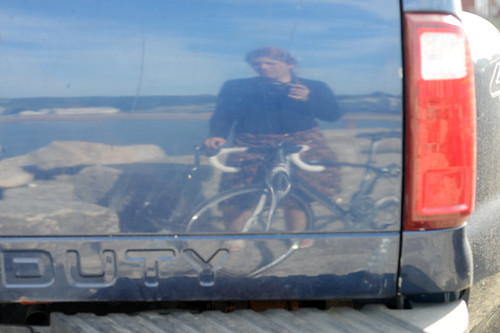

 Today was Grandpa Vic's birthday. And yesterday was the anniversary of his death. Born 115 years ago, in 1893, grandpa died in 1991, the day before his 98th birthday. It's hard to believe that it has been 17 years. Taken in 1983, during his 90th birthday celebration, this is the only picture I've come across, so far, of just us.
Today was Grandpa Vic's birthday. And yesterday was the anniversary of his death. Born 115 years ago, in 1893, grandpa died in 1991, the day before his 98th birthday. It's hard to believe that it has been 17 years. Taken in 1983, during his 90th birthday celebration, this is the only picture I've come across, so far, of just us.
















